
Women in the United States didn’t get the right to vote until 1920. While the quest for gender equality has continued, there’s still a ways to go.
Working women overall earned 85% of what their male counterparts earned in 2018, according to the Pew Research Center.
The average pay gap varies among the 50 states, and some states are significantly better for women than others in terms of health, safety and economic security.
Financial site WalletHub took a look at such indicators of gender equality for its Best and Worst States for Women’s Equality report.
The website compared states across three key dimensions: workplace environment; education and health; and political empowerment. Those dimensions were evaluated on 17 factors, such as the disparity in hours worked by women and men, in math scores and in political representation. The site then gave each state an overall score and ranked them by total scores.
Following is a look at how each state ranks, starting with the state with the largest gender gap.
50. Utah

Total score: 25.10 out of 100 points
Not only does Utah have the lowest score in the analysis, it’s also the lowest by an embarrassing margin. The second-lowest-ranked state (Idaho) had a total score of 40.03 points to Utah’s 25.10.
The Beehive State also ranked last for both women’s workplace environment and for their education and health, and only managed to beat out one state, Louisiana, to come in 49th for women’s political empowerment.
That last ranking comes despite the fact that back in 1895, Utah became the second state to allow women to vote.
49. Idaho

Total score: 40.03 out of 100 points
Although Idaho’s total score looks impressive when compared with Utah’s, the Gem State has a long way to go.
In addition to WalletHub’s analysis ranking Idaho as No. 49, a 2018 report by the American Association of University Women ranked the state as sixth-worst based on the pay gap. Women working full time in Idaho were paid 75% of what men earned, according to the AAUW.
48. Texas

Total score: 42.75 out of 100 points
Texas comes in quite low in the WalletHub analysis, but here’s one bright spot for the women of the Lone Star State: A 2018 report out of the University of Texas at Austin found that women outperformed their male peers on an important metric.
The university’s graduation rate task force report shows that in 2017, 70% of women at the school graduated in four years. Only 56% of men managed to do the same.
47. South Carolina

Total score: 43.62 out of 100 points
Maybe South Carolina’s technology industry can help the state close its gender gap.
The latest Cyberstates report, an annual publication that evaluates the tech workforce across the county, shows that South Carolina ranks No. 6 in the country for the share of women in the state’s tech industry.
That said, the number is still low — only 34.5% of workers in the state’s technology sector are women.
46. Louisiana

Total score: 44.22 out of 100 points
Louisiana managed to stay out of last place in the WalletHub ranking, but fared worse in a 2018 report by the American Association of University Women.
That report ranked the Bayou State last in the nation for its gender pay gap, with women who work full-time, year-round jobs earning just 69% of what their male counterparts make.
45. Virginia

Total score: 44.93 out of 100 points
Virginia has a chance to make history. The Old Dominion could become the 38th and final state to ratify the Equal Rights Amendment when newly elected legislators take office in January 2020.
But the ERA’s path isn’t clear-cut: A congressionally imposed deadline for the constitutional amendment expired decades ago, and The Atlantic notes that if Virginia ratifies the ERA now, a legal challenge is likely.
44. Alabama

Total score: 45.99 out of 100 points
Alabama doesn’t score high for women’s equality, and the Southern state doesn’t score much higher on other lists, either.
When U.S. News & World Report issued its latest Best States Rankings, which takes into account everything from health care to education to fiscal stability, Alabama came in 49th out of the 50 states, topping only Louisiana.
43. Missouri

Total score: 46.68 out of 100 points
The Show-Me State has the 10th-lowest life expectancy of any state, according to an analysis compiled by seniorliving.org, cited recently by the St. Louis Post-Dispatch.
The average Missouri resident is projected to live 77.4 years. The paper points out that that’s almost a full two years less than the 79.1 years projected for residents of neighboring Illinois.
42. Oklahoma

Total score: 47.06 out of 100 points
Oklahoma also scored low in another recent study assessing women’s issues.
The state was No. 47 in a recent Security.org study ranking of states from best to worst for women’s rights and freedoms across several categories: economic freedom, education, health and reproductive freedom, and political participation.
41. Kansas

Total score: 47.27 out of 100 points
Women in Wichita now have a chance to learn how to negotiate for higher pay.
The American Association of University Women, working with the Junior League of Wichita, is offering 24 workshops over the next year to teach women in the city that vital skill. Maybe that will help improve the gender pay gap in Kansas, where women earn just 77% of their male counterparts, according to the AAUW.
40. North Carolina

Total score: 47.69 out of 100 points
In April 2019, North Carolina Gov. Roy Cooper signed an executive order that bans government agencies in his state from considering a job applicant’s salary history when hiring.
Cooper noted that the median annual pay for women in the state is $36,400, compared with $45,000 for men. He signed the order on Equal Pay Day in hopes that it will help address the gender pay gap among state workers.
39. Illinois

Total score: 48.76 out of 100 points
Illinois joined numerous other states in 2019 in passing legislation aimed at decreasing the wage gap between men and women.
The new law bans employers from asking job applicants about their past salaries, with the idea that the practice disproportionately hurts women, who typically have lower salaries on their resumes than men.
38. Wyoming

Total score: 49.19 out of 100 points
Wyoming has the nation’s largest income gap between men and women, according to the WalletHub study.
On the bright side, the state has the smallest gender gap when it comes to executive positions, though women still fall short of equality in Wyoming boardrooms.
37. Georgia

Total score: 49.36 out of 100 points
Some good news for Georgia businesswomen: The Peach State ranks second in the growth of women-owned businesses, according to the ninth annual State of Women-Owned Businesses Report.
Georgia has about 533,030 women-owned businesses that bring an estimated $57 billion to the state’s economy, the report says.
36. Florida

Total score: 49.85 out of 100 points
Sunny Florida means business. The Sunshine State has the third-highest growth in the number of women-owned firms in 2019, according to the annual State of Women-Owned Businesses Report, commissioned by American Express.
35. Mississippi
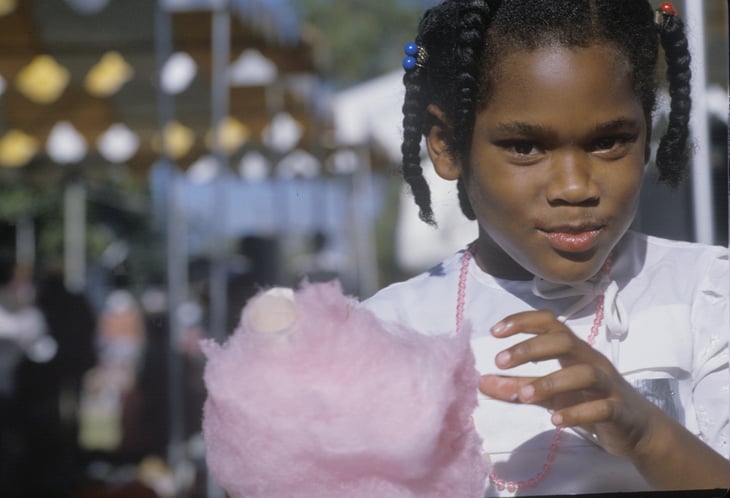
Total score: 50.32 out of 100 points
Mississippi remains a tough place for children. According to the recent Annie E. Casey Foundation KIDS COUNT report, the state is ranked No. 48 for overall child well-being.
According to the report, 27% of Mississippi children live in poverty.
34. Nebraska

Total score: 50.47 out of 100 points
Over their lifetimes in similar jobs, men in Nebraska are expected to earn $462,000 more than Nebraska women, The Lincoln Journal Star newspaper reports.
This estimate holds even if those women have attained education levels equal to or beyond their male counterparts.
33. Maryland

Total score: 50.56 out of 100 points
Maryland’s Equal Pay for Equal Work law says that an employer cannot pay employees of one sex or gender identity at a lower rate than those of another sex or gender identity, as long as the work and workplace are comparable.
A new bill enacted in May 2019 adds a civil penalty equal to 10% of the amount of damages owed by an employer for violating the law.
32. South Dakota

Total score: 50.71 out of 100 points
South Dakota’s first female governor, Republican Kristi Noem, took office in 2019. Noem was elected 100 years and one day after women’s suffrage passed in the state.
31. Arkansas
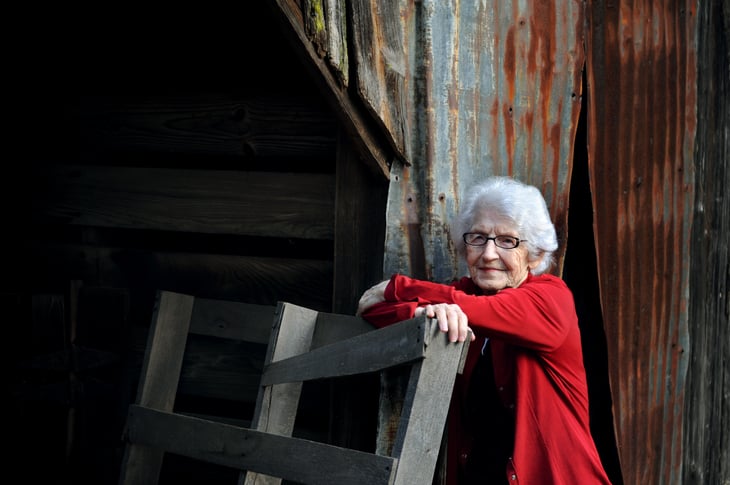
Total score: 51.64 out of 100 points
A recent report from the March of Dimes gives Arkansas a grade of F when it comes to maternal and children’s health.
Nationally, 10% of babies are born three or more weeks before their due date. In Arkansas, that figure is 11.6%, an increase from the year before. Only four states have a higher preterm birth rate in the study of 2018 data.
30. New Jersey

Total score: 52.30 out of 100 points
More than 50% of New Jersey residents are female, but female representation in the State Legislature will drop to 30% come January 2020, WHYY-FM reports.
However, despite the large political gender gap, the Garden State does boast a female lieutenant governor in Sheila Oliver.
29. Tennessee

Total score: 53.35 out of 100 points
Here’s a grim statistic for Tennessee: According to a report from the Violence Policy Center, the state has the fifth-highest rate in the nation for women murdered by men, tied with South Carolina.
The report, which uses FBI data, says that 90% of the victims were killed by someone they knew.
28. Pennsylvania

Total score: 54.04 out of 100 points
Pennsylvania Gov. Tom Wolf says he’s committed to closing the state’s gender pay gap, and to that end, the state is offering free salary negotiation workshops for women.
The Pennsylvania Commission for Women is partnering with the American Association of University Women and its Work Smart program to host the workshops.
27. Indiana
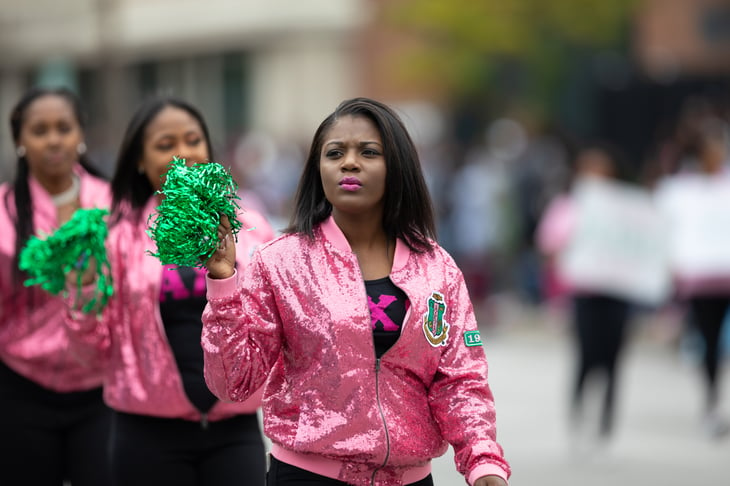
Total score: 54.06 out of 100 points
Some scary statistics for Indiana residents:
- The state’s maternal mortality rate is now the nation’s third-highest, according to the latest report by America’s Health Rankings and the Indiana Department of Health.
- Indiana’s infant mortality rate is the seventh-highest in the U.S.
26. North Dakota

Total score: 54.47 out of 100 points
In every single state, men have more of the bachelor’s degrees in STEM fields (science, technology, engineering and mathematics) than women do, according to a study by Typing.com, a free service offering teachers and students typing and other tech skills, including coding.
But that gender gap is narrowing in North Dakota: Its STEM degree gap has decreased 5.7% since 2015.
25. Wisconsin

Total score: 54.93 out of 100 points
The gender gap still exists here, of course, but Wisconsin ranks fairly high for economic security.
According to a recent report from the nonprofit Institute for Women’s Policy Research in Washington, D.C, 73% of Badger State households have economic security, meaning that working adults have enough income to meet their basic monthly expenses, such as housing, food, transportation and child-care expenses, and still save for emergencies and retirement.
24. Kentucky

Total score: 55.74 out of 100 points
Kentucky is one of six states tied for the top spot in WalletHub’s study for having the smallest gap between men and women with an advanced educational degree (higher than a bachelor’s degree).
23. Connecticut

Total score: 56.47 out of 100 points
In 2019, Connecticut launched the Governor’s Council on Women and Girls, with the intention of championing legislation and evaluating state policies to advance women across the state.
The group will focus on four main areas: education and STEAM (Science, Technology, Engineering, Arts and Math); economic opportunity and workforce equity; leadership; and health and safety.
22. Washington

Total score: 56.58 out of 100 points
As the University of Washington fight song urges, “Bow down to Washington.”
The Pacific Northwest state topped U.S. News & World Report’s 2019 Best States rankings, scoring especially high for its infrastructure, education, health care and overall economy.
21. New Hampshire

Total score: 56.95 out of 100 points
A recent analysis of 2017 Census Bureau data shows that, in New Hampshire, women age 25 and older outnumber men of that age group on all levels of higher education attainment.
The state has over 10,000 more women than men with graduate, bachelor’s and associate’s degrees, the data show, and over 5,000 more women than men have some college education but no degree.
Still, New Hampshire women earn less for working full time than men, at every level of educational attainment.
20. Oregon

Total score: 57.52 out of 100 points
Oregon is home to major companies that earn plenty of attention (Nike, for one). Although the state has the No. 20 ranking overall in the WalletHub survey, it’s Oregon’s score on a workplace metric that really shines.
The state is No. 6 for “workplace environment,” which considers factors such as job security disparity, differences in work hours and disparity among executive positions.
19. Ohio

Total score: 58.07 out of 100 points
The gender gap exists in academia, too. A new study shows that male professors at The Ohio State University, the largest college in Ohio, earn 11% more than female professors.
18. Arizona

Total score: 58.90 out of 100 points
According to the most recent study by the Violence Policy Center, 68 women in Arizona — 1.92 out of every 100,000 — were killed by a man in 2017.
That is the seventh-highest rate in the nation.
17. California

Total score: 60.23 out of 100 points
In 2019, California launched a campaign to raise awareness of the gender pay gap and attempt to close it.
Thirteen major companies, including Apple and Salesforce, agreed to voluntarily conduct an annual company-wide gender pay analysis and review hiring and promotion processes.
16. Rhode Island

Total score: 61.08 out of 100 points
Tiny Rhode Island scores high in another recent WalletHub ranking. The Ocean State was found to be the second-best state for working moms.
15. Montana

Total score: 61.73 out of 100 points
The U.S. House of Representatives recently honored a famed women’s rights advocate from Montana. The main post office in Missoula was named in honor of Jeanne Rankin, who was elected to Congress in 1916, four years before the 19th Amendment granted women throughout the U.S. the right to vote.
Rankin helped Montana women secure the right of women to vote in that state in 1914.
14. Massachusetts

Total score: 62.48 out of 100 points
Massachusetts scored high on another recent list of importance to residents. The Bay State was ranked the best state to live in by financial news site 24/7 Wall Street.
Massachusetts earned credit for its well-educated population and higher median income and life expectancy, among other criteria.
13. Iowa

Total score: 62.60 out of 100 points
Iowa scores fairly high in the WalletHub analysis. But another analysis, by Security.org, points out that the Hawkeye State comes in low when it comes to female business owners. In that study, Iowa is ranked No. 49 for the percentage of employer firms owned by women.
12. Michigan
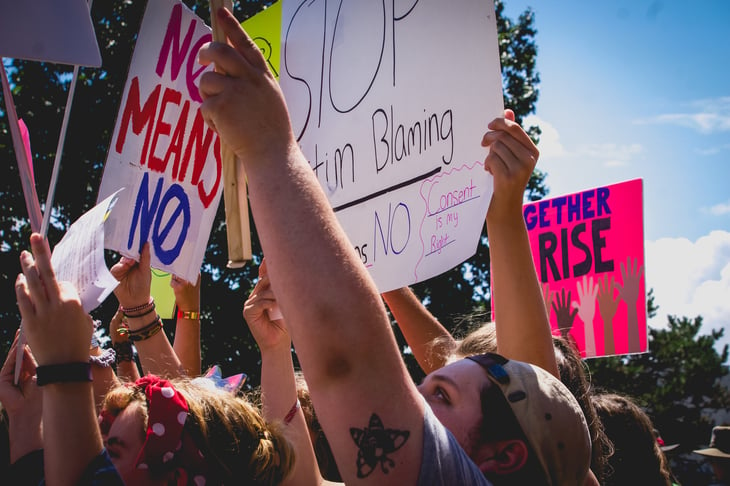
Total score: 62.82 out of 100
Michigan didn’t make the top 10 in the WalletHub state analysis. But it scores high on the metric of women’s political empowerment, coming in at No. 4.
11. Alaska

Total score: 63.53 out of 100
The Last Frontier boasts the highest percentage of women-owned businesses in the nation, according to a report by the University of Alaska’s Center for Economic Development. About 30% of firms in the state are owned by women.
10. Delaware

Total score: 63.81 out of 100
In January 2019, Delaware passed an Equal Rights Amendment to the state constitution.
The amendment bars discrimination based on sex.
9. Vermont

Total score: 64.44 out of 100
Vermont came in at No. 9 in the WalletHub analysis, and scores even higher in a similar report. In an annual ranking of states for gender equality, done earlier this year by Bloomberg, the Green Mountain State came in at No. 1 for the third year in a row.
8. Colorado

Total score: 64.50 out of 100
This isn’t the only study in which mountainous Colorado scores high. The state’s economy ranks No. 1 in U.S. News & World Report’s recent Best States Ranking, although the state comes in No. 10 overall.
7. Minnesota

Total score: 64.60 out of 100
Minnesota believes in hard work. The Land of 10,000 Lakes has the third-highest labor force participation rate in the nation, with 69.7% of Minnesotans 16 and older either employed or actively looking for work, compared with the national average of 62.9%.
6. West Virginia

Total score: 64.61 out of 100
West Virginia scores fairly well in WalletHub’s rankings, placing especially high (No. 5) on the metric of women’s education and health.
But in another study, undertaken by Health Testing Centers, one statistic looks bleak: The study shows 22% of West Virginia women, the most of any state, reported 14 or more poor mental-health days in the previous month.
5. New Mexico
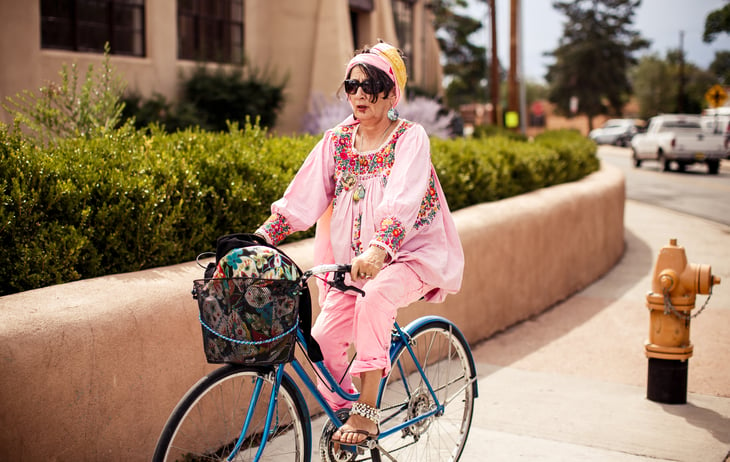
Total score: 65.63 out of 100
New Mexico has the smallest income gap between men and women, the WalletHub study shows.
The Land of Enchantment also had the highest score of any state on the workplace environment metric.
4. New York

Total score: 65.68 out of 100
“If I can make it there, I’ll make it anywhere,” the song claims about the state’s largest city. It helps, though, if you’re well-educated.
The Empire State is one of six states that tie for having the smallest gender gap among residents with advanced degrees, WalletHub’s analysis shows.
3. Nevada

Total score: 71.22 out of 100
Nevada is the only state in the nation where the state legislature is majority female.
Women hold 33 of 63 total seats in the Assembly and Senate in the Silver State, notes U.S. News & World Report.
2. Hawaii

Total score: 73.10 out of 100
Women in Hawaii don’t just loll around on the state’s plentiful beaches; they tend to their medical needs.
A report by Health Testing Centers shows that about 7 out of 10 Aloha State women received mammograms as often as suggested. That’s more than any other state.
1. Maine

Total score: 76.75 out of 100
Way to go, Maine! The state tops WalletHub’s analysis, scoring especially high for women’s education and health and for women’s political empowerment.
In 2018, the state elected its first female governor, Janet Mills. As the Bangor Daily News notes, more than half of Mills’ cabinet is made up of women.
How does your state stack up against others as a place for women’s equality? Share your thoughts in comments below or on our Facebook page.










Add a Comment
Our Policy: We welcome relevant and respectful comments in order to foster healthy and informative discussions. All other comments may be removed. Comments with links are automatically held for moderation.